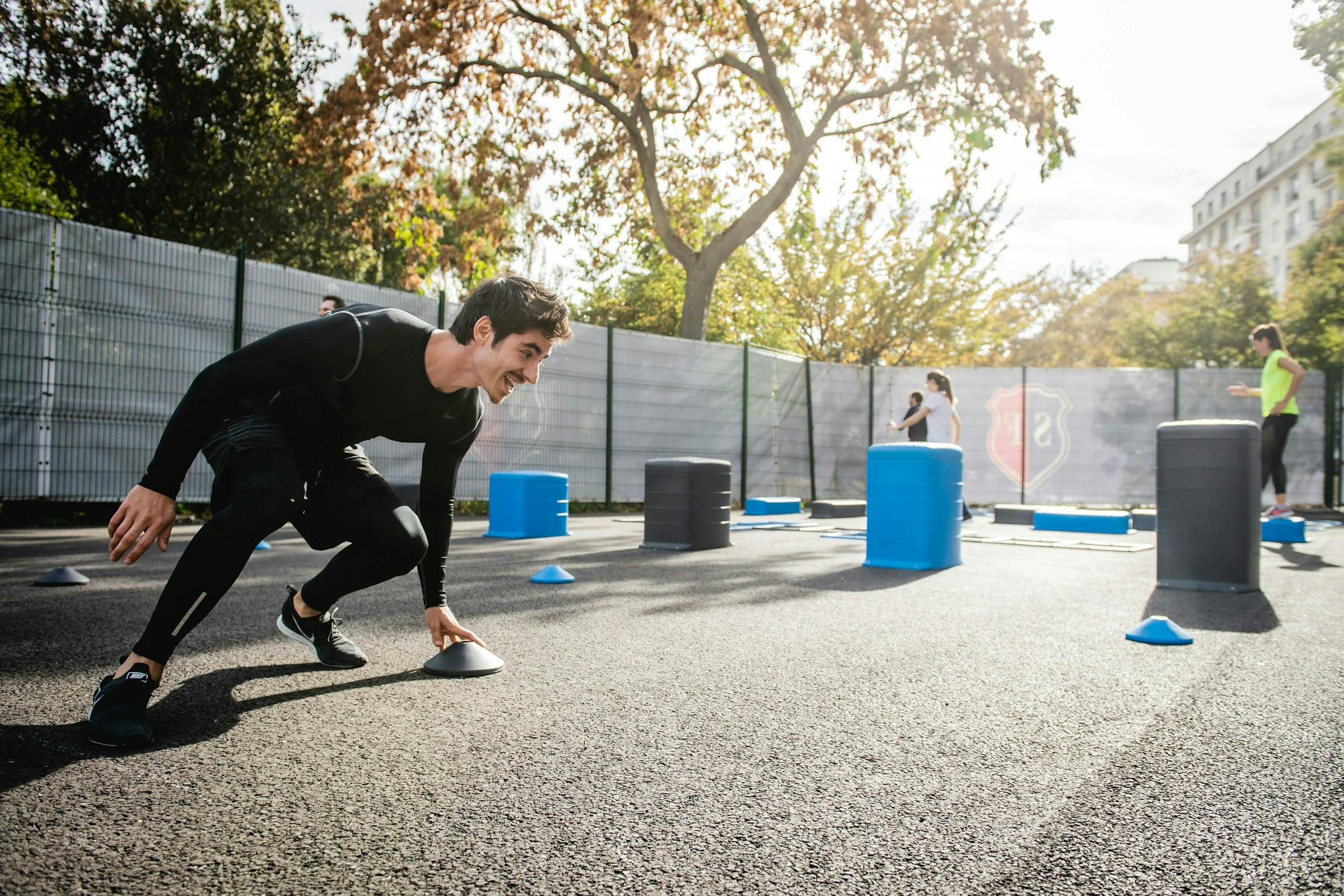How to Break a Fast Without Spiking Blood Sugar
By Dr. Priyali Singh, MD
Reviewed by Dr. Jossy Onwude, MD
Published Jun 6, 2025
8 min read

Fasting has taken the health and wellness world by storm. Whether you're doing intermittent fasting, time-restricted eating, or even an extended fast, chances are you’re doing it to improve your health, lose weight, or stabilize your blood sugar. But here’s the thing many people overlook: the way you break your fast matters just as much as the fast itself. If you break your fast the wrong way, you could end up undoing many of the benefits you’ve worked so hard to gain.
This article will walk you through the science of how your body reacts to food after fasting, what you should eat first, what to avoid, and how to make sure you’re not spiking your glucose levels right after a fast. By the end, you'll know exactly how to break a fast without sabotaging your blood sugar or your energy.
What Happens to Your Blood Sugar During a Fast?
Let’s start with a quick breakdown of what’s going on inside your body when you fast.
When you stop eating for several hours or more, your body begins to use up the glucose (sugar) stored in your liver and muscles. Once that’s depleted, it starts to burn fat for energy instead. This process is called ketosis, and it's part of why fasting is so popular for fat loss.
During this time, your insulin levels drop. Insulin is the hormone that helps your body store and use glucose. When you’re not eating, your insulin stays low, and your cells become more sensitive to it. That’s a good thing—it means your body is more efficient at managing sugar when you do eat again.
But here’s the catch: after a fast, your body is primed to absorb nutrients quickly. So if you eat something high in sugar or refined carbs, your blood glucose can spike dramatically. Your body isn’t ready for that sudden rush, and you may end up feeling shaky, sluggish, or even hungrier than before. Worse, frequent spikes like this can lead to insulin resistance over time.
The Biggest Mistake People Make When Breaking a Fast
Imagine this: You’ve been fasting for 16 hours. You’re hungry. You open the fridge and grab a piece of fruit or pour yourself a glass of orange juice. It seems healthy, right? But moments later, your blood sugar skyrockets, and you feel tired, anxious, or ravenous again soon after.
This is one of the most common mistakes people make—they break their fast with high-glycemic foods. These are foods that raise your blood sugar quickly. While fruits and juices have vitamins, they also contain natural sugars that can cause a glucose spike, especially when eaten alone.
Even some seemingly “healthy” choices like oatmeal, granola, or energy bars can lead to big glucose swings if they’re the first thing you eat after fasting. Your body is like a dry sponge after a fast—ready to absorb whatever you give it. So give it something that keeps your blood sugar steady.
RELATED READ: Ultimate Low Glycemic Foods List: A Science-Backed Guide for Better Health
Best Foods to Break a Fast Without Spiking Glucose

If you want to break your fast the smart way, you’ll want to think in terms of protein, fat, and fiber. These nutrients digest more slowly, don’t cause sharp glucose spikes, and help you feel full longer.
Let’s walk through what that looks like.
Start with Protein
Protein is the MVP when it comes to breaking your fast. It helps you feel full, supports muscle repair, and most importantly, it keeps your blood sugar stable. Eating protein first also sets the stage for better glucose control throughout the rest of your meal.
Think simple: a couple of eggs, some Greek yogurt, or a protein shake are all great options. Even leftovers from last night’s chicken dinner work.
Add Healthy Fats
Fats help slow down the digestion of your entire meal, which means sugar enters your bloodstream more gradually. Think avocado, a handful of almonds, or a drizzle of olive oil on your veggies. You don’t need a ton—just enough to balance the meal.
Include Non-Starchy Vegetables
Leafy greens, cucumbers, zucchini, bell peppers, and broccoli are packed with fiber and water, both of which are great for slowing down digestion. Starting your refeed with vegetables also supports gut health and gives your body essential vitamins and minerals.
Be Careful With Carbs
Carbohydrates aren’t the enemy. But after a fast, it’s best to choose carbs wisely and time them properly. Instead of reaching for white bread or sugary cereals, go for lower-glycemic options like sweet potatoes, lentils, or berries.
Also, try eating your carbs last in your meal. This little trick can make a big difference. Studies have shown that eating protein and fat before carbs can reduce the glucose spike that happens after eating.
How Meal Order Affects Your Glucose Response
It might sound surprising, but the order in which you eat your food can have a big impact on your blood sugar. This concept is called “food sequencing,” and it’s backed by real science.
Here’s how it works: When you eat protein, fat, and fiber before your carbs, your body digests those slower-digesting foods first. This delays how quickly sugar from the carbs gets absorbed, which leads to a gentler rise in blood sugar.
Let’s say you’re having a meal that includes chicken, salad, and rice. If you eat the salad and chicken first, then the rice, your glucose response will likely be much more stable than if you started with the rice.
This is such a simple habit, but it can really help if you’re trying to manage your energy, appetite, or insulin sensitivity.
Sample Post-Fast Meals for Stable Glucose
Need some inspiration? Here are a few balanced meals that are gentle on your blood sugar and perfect for breaking a fast:
- Meal 1: Two scrambled eggs with sautéed spinach and half an avocado
- Meal 2: Greek yogurt (plain, full-fat) with a sprinkle of chia seeds and a few blueberries
- Meal 3: Grilled chicken salad with olive oil dressing and a small side of roasted sweet potatoes
- Meal 4: Protein smoothie with unsweetened almond milk, protein powder, a tablespoon of peanut butter, and a few frozen berries
These meals combine protein, healthy fat, fiber, and just the right amount of low-GI carbs. They won’t send your blood sugar on a rollercoaster—and they’ll leave you feeling energized, not sluggish.
Should You Exercise Before or After Breaking a Fast?

This is a great question, and the answer depends on your goals and how your body feels.
Some people like to exercise in a fasted state, especially if they’re doing light cardio or yoga. This can enhance fat-burning and improve insulin sensitivity. But if you’re doing a high-intensity workout or lifting weights, you might want to eat a little something first, especially if you feel dizzy or tired.
After your workout, breaking your fast with protein and some carbs can help with muscle recovery. If you exercise before eating, just be sure to stay hydrated and listen to your body.
Bonus Tips to Prevent Glucose Spikes After Fasting
Want to level up your glucose control? Here are a few extra tips that can help:
- Drink water or herbal tea before eating. This can help your digestion and prepare your body for food.
- Consider a tablespoon of apple cider vinegar before your meal. Some research suggests it can lower the blood sugar response to carbs.
- Don’t eat too quickly. Eating slowly gives your body time to respond and helps prevent overeating.
- Avoid large portion sizes right away. After fasting, start with a smaller meal and eat again later if you’re still hungry.
- Stay mindful of stress and sleep. Poor sleep and high stress levels can make your blood sugar more sensitive, even if you eat all the right foods.
Key Takeaways
Breaking a fast is just as important as the fast itself, especially if you care about blood sugar control, energy levels, or metabolic health. Your body is extra sensitive after fasting, so the foods you choose—and the order you eat them—really matter.
Start with protein, add some healthy fats, throw in a few vegetables, and save carbs for last. Skip the juice and sugary cereals, and go for meals that are rich in nutrients and low in glycemic impact.
It’s not about perfection—it’s about being intentional. When you break your fast the right way, you set yourself up for better energy, fewer cravings, and a healthier metabolism.
FAQs
1. What is the best thing to eat after intermittent fasting?
A meal with protein, healthy fat, and fiber is best. Think eggs and avocado, Greek yogurt with chia seeds, or a chicken salad with olive oil.
2. Can I break a fast with fruit?
It’s better to pair fruit with protein or fat to avoid a sugar spike. For example, berries with yogurt or apple slices with almond butter.
3. Why does my blood sugar spike after fasting?
Your body is more insulin sensitive after fasting. If you eat high-sugar or high-carb foods first, your blood sugar can spike quickly.
4. Does bulletproof coffee break a fast?
Technically, yes—it contains calories and fat. But it doesn’t spike insulin much and may still support the metabolic benefits of fasting.
5. Can you break a fast with protein?
Yes! Protein is one of the best foods to break a fast with. It helps control blood sugar, supports muscle, and keeps you full.
By making a few smart choices when breaking your fast, you can keep your glucose in check, feel better, and make the most of your fasting routine. Simple tweaks, powerful results.
Share this article

10 Best Lower Back Stretches for Pain Relief and Mobility (Backed by Science)
Editorial Team
Sep 9, 202515 min read

20 Proven Tips to Lose Belly Fat Safely and Naturally (Backed by Science)
Karyn O.
Sep 4, 202514 min read

The Benefits of Napping: How Short Sleep Boosts Your Health, Energy, and Brainpower
Dr. Jossy Onwude, MD
Sep 9, 202510 min read